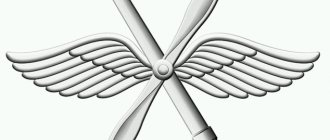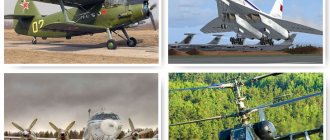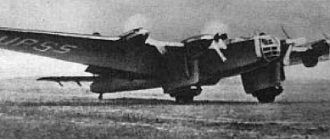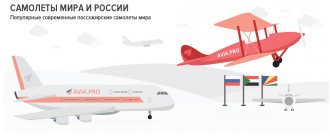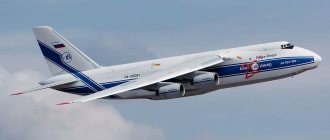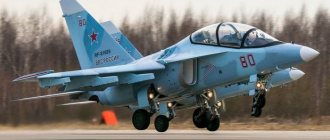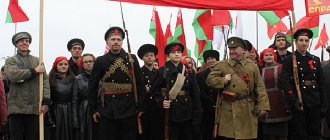Out of step
Today one can only wonder how Oleg Antonov, for whom the An-2 became the first independent machine, managed to get consent for its production. After all, the birth of the aircraft occurred at a time when the leadership of the Soviet Union was delirious about missiles and jet aircraft. It would seem, where would we go with a leisurely biplane, the age of which has long passed! But the first-born of domestic jet combat aviation, the MiG-9 and Yak-15, were discontinued and written off a long time ago, and the An-2 flew and still flies, proving that not everything in the world is decided by speed and flight altitude.
We must give Oleg Antonov his due: he managed to carry the idea of the future An-2 through the difficult years of the war, when the country really had no time for such aircraft. For the first time, the idea of a machine with a short takeoff and landing, capable of taking on board a load of up to one and a half tons, was formulated by an aircraft designer back in 1940. The idea was fair and timely. By that time, Soviet aviation did not have an aircraft that could provide delivery of cargo and people to hard-to-reach areas, unless we were talking about a couple of people and a hundred or two kilograms of equipment. Both the Po-2 and the Sh-2 flying boat, designed by Vadim Shavrov, could cope with this. All other aircraft required a more or less solid landing strip.
Oleg Antonov’s idea was not born out of nowhere. Back in 1937, the biplane CX-1 (aka LIG-10) designed by Anatoly Bedunkovich made its first flight. CX-1 stood for “agricultural aircraft, first model”: the machine was initially intended to be used as a field pollinator. The second abbreviation was an abbreviation for the Leningrad Institute of Civil Air Fleet Engineers, where the designer was teaching at that moment. The machine even looks very similar to the familiar An-2, which is understandable: in order to achieve a short takeoff and landing and at the same time ensure sufficient payload and capacity, a single-engine biplane with a “thick” fuselage was required. One can only guess why the CX-1, created in the heyday of biplanes, was never put into production. Most likely, the point was that there were no corresponding tasks for him. The U-2 could handle most of them, but the rest could have waited: the country was preparing for a big war, and it needed other aircraft.
Flight restrictions
An-2 flight manual
The An-2 aircraft is approved for transport flights and aerial work flights. When operating flights, the following minimums are established for takeoff and landing.
For IFR flights:
- minimum for take-off equal to the minimum for landing at the departure aerodrome;
- Minimums for landing:
| Approach mode | Decision height (Hp.r.), visibility range (Lview) | |||
| flights with passengers (cargo) | urgent flights to serve healthcare organizations, search and rescue operations and training flights | |||
| Hp.r., m | Lview, m | Hp.r., m | Lview, m | |
| RSP+OSP, RSP | 150 | 2000 | 80 | 1 000 |
| OSB | 150 | 2000 | 80 | 1 000 |
| OPRS | 200 | 2 500 | 200 | 2 500 |
For VFR flights, the minimum values for the height of the cloud base and visibility range (Hn.g.o. and Lview)
| Terrain | Hn.g.o., m | Lview, m |
| In the takeoff and landing area | ||
| Flat and hilly | 150 | 2 000 |
| Mountain | 300 | 5 000 |
| In the approach zone, along air routes, international flights and established routes | ||
| Flat and hilly | 150 | 2 000 |
| Mountain (height up to 2,000 m) | 400 | 5 000 |
| Mountain (altitude 2000 m or more) | 700 | 10 000 |
For flights along the OPVP, the minimum value of the height of the base of the clouds and the visibility range (Hn.g.o., Lview)
| Terrain | Hn.g.o., m | Lview, m |
| Urgent flights to serve healthcare organizations, search and rescue operations and training flights | ||
| Flat and hilly | ||
| during the day | 100 | 1 000 |
| at night | 300 | 4 000 |
| Mountain during the day | 400 | 2 000 |
| Transport flights and aviation work | ||
| Flat and hilly | ||
| at night | 450 | 4 000 |
| Maximum number of passengers on board (limited due to the conditions for maintaining acceptable alignment) | 12 people |
| Maximum commercial load | 1,500 kg |
| Maximum take-off weight: | |
| — in passenger and cargo versions: | |
| at air temperatures near the ground up to +15°C | 5500 kg |
| at air temperatures near the ground from +15°C and above | 5,250 kg |
| - in agricultural version | 5,250 kg |
| — for aircraft equipped with aerial photography equipment with extra-fuselage devices | 5,250 kg |
| The maximum landing weight of the aircraft for the indicated options is equal to their maximum take-off weight | |
| Acceptable alignments: | |
| — extremely forward | 17.2% MAR |
| - extremely rear | 33% MAR |
| Maximum permissible wind speed components: | |
| — oncoming — for takeoff and landing | 18 m/s |
| - tailwind - for training flights and, as an exception, in production conditions when it is impossible to take off or land against the wind | 3 m/s |
| - lateral (at an angle of 90°) | 6 m/s |
| — maximum permissible wind speed for taxiing | 18 m/s |
| Maximum depth of unrolled snow cover (freshly fallen or old dry loose snow) for take-off on a wheeled chassis | No more than 35 cm |
| Maximum depth of stale, compacted or lightly compacted snow cover for takeoff and landing on a wheeled chassis | No more than 26 cm |
| Maximum permissible speed according to the device: | |
| - in horizontal flight | 255 km/h |
| — on planning (according to strength conditions) | No more than 300 km/h |
| - when extending, retracting flaps and flying with extended flaps: | |
| up to 30° | No more than 150 km/h |
| up to 40° | No more than 130 km/h |
| Maximum permissible roll angle: | |
| — in passenger and cargo versions, in the zone | No more than 45° |
| - in agricultural version | No more than 30° |
| Maximum deflection of the ball according to the sliding indicators when performing a maneuver | No more than one ball diameter |
| Maximum flap deflection for takeoff and landing: | |
| — with a counter wind speed component: | |
| up to 10m/s | 30° |
| from 10 to 18 m/s | 0° |
| — with a side wind speed component at an angle of 90° to the runway axis: | |
| up to 5 m/s | 30° |
| up to 6m/s | 0° |
| — with a tailwind component: | |
| up to 3 m/s | 30° |
Notes:
- In case of an emergency landing on a limited area, it is allowed to lower the flaps to 40°.
- The minimum permissible strength of the soil, measured by the U-1 striker, for takeoff and landing of an aircraft with a take-off weight of up to 5260 kg is 3 kg/cm2, and with a take-off weight of more than 5,260 kg - 3.6 kg/cm2.
If the strength of the soil is unknown, then it is determined by the depth of the rut (no more than 7 cm) left by the aircraft when taxiing.
Minimum crew size
1. Transport, aviation-chemical and sanitary flights:
- aircraft commander;
- second pilot.
2. Forestry aviation flights:
- aircraft commander;
- second pilot.
The crew may include: an observer pilot, an aeronavigator, an aerotoxicator, a flight operator or a flight radio operator.
3. Aerial photography flights:
- aircraft commander;
- navigator-aerial surveyor;
- flight mechanic (co-pilot);
- flight operator
4. Aerial photography flights:
- aircraft commander;
- second pilot;
- Shnurman-aerial surveyor;
- flight operator
5. Flights in the high latitudes of the Arctic and Antarctica:
- aircraft commander;
- second pilot;
- navigator;
- flight mechanic;
- flight radio operator;
- flight operator (if necessary).
6. Search and rescue flights:
- aircraft commander;
- second pilot.
Note:
Depending on the complexity of search and rescue flights and the navigation situation, the crew may include a navigator or a member of the flight command staff.
Multi-purpose aircraft An-2
Simple and ready for anything
Very soon, the USSR Ministry of Aviation Industry issued an order that formulated the requirements for the new aircraft - as if Oleg Antonov did not know all these parameters by heart! What was more important was that the order named Novosibirsk aircraft plant No. 153 and its design bureau, which was headed by Antonov, responsible for the design and construction of the future An-2. All that remained was to make the dream come true, which the designer had not parted with for the seventh year now.
Soon, a legitimate opportunity arose to make the Vezdelet not just a cargo biplane, but a multi-purpose aircraft: the Ministry of Aviation Industry demanded the creation of an agricultural aircraft to replace the Po-2. One can only be amazed at how accurately the young Oleg Antonov (in 1940 he was only 34 years old!) was able to predict the prospects of his first car. Although this was not a fortune-telling, but an exact calculation: there were no other low-speed biplanes with high takeoff and landing characteristics either in reality or in the future and could not appear. All the other designers were busy with promising jet aircraft and did not want to look back at the “outdated” designs.
And one more thing showed Oleg Antonov’s ability to look ahead - in the choice of the principle of aircraft design. Realizing that the more mass-produced the aircraft he designs, the simpler it should be both in construction and in operation, the aircraft designer tried to use the largest possible number of already developed elements and parts in the An-2. For example, the wheels of the main landing gear were taken from the Il-2 attack aircraft, the tail wheels from the Tu-2 bomber: there were plenty of both in warehouses.
By the end of July 1947, the first flightable copy of the Vezdelet was ready. For the first flight, Oleg Antonov asked test pilot Pavel Volodin, whom he had met some time ago, to come from Moscow. Volodin arrived in Novosibirsk on August 9, and two weeks later the plane was ready for flight. All that remained was to obtain permission from the Ministry of Aviation Industry, for which Antonov had to specially fly to Moscow. Therefore, the first flight was postponed for more than a week - until August 31.
While the creator of the An-2 was wandering around the authorities, Pavel Volodin was getting acquainted with the plane standing on the ground. In his memoirs, the pilot admitted that the biplane made a good impression on him at first sight: “Everything felt deeply thoughtful, thorough and complete. Of course, I understood that it was too early to make an assessment: “we’ll fly, then we’ll see.”
“Kukuruznik” is not going to retire
The flight was scheduled for the morning of August 31, 1947. Everyone was worried, because they understood: if something happened to the plane during the first flight, this would put an end to its fate. “I somehow didn’t think about myself. There was only one thought: the plane had to take off and land. Sit down unharmed,” Pavel Volodin wrote much later. – Having put on a parachute, I entered the plane and closed the front door behind me. When I took the helm in my hands, all my worries disappeared at once, as if lifted by hand.” Those thirty minutes of the An-2's first flight seemed to the pilot a time of pure joy. It became clear: the plane not only turned out good, but turned out exactly as it was intended - simple, capable of landing and taking off from anywhere and doing any job.
Life has fully confirmed this first impression of the An-2. The aircraft has found application in all areas of aviation. The military uses it as a light transport aircraft and as an airborne drop vehicle. Civilian - both as a passenger, and as a cargo, and as an ambulance, and as a firefighter... Perhaps, it is impossible to find a field of application for which the An-2 would not be suitable. Suffice it to say that he immediately and forever registered in polar aviation, where unsuccessful aircraft were not tolerated at all. Many have already been written off, but the Annushkas have flown and continue to fly.
At first, the An-2 was produced in Kyiv, where aircraft factory No. 473 was transferred to the disposal of the newly created Oleg Antonov Design Bureau. In 1952, it was suddenly decided to stop production, but a year later this senseless decision was canceled. The Kiev plant produced the An-2 until 1963, and since 1959 the car was assembled in Poland - at a plant in the city of Mielec. It was there that the largest number of Annushkas were built, flying throughout the socialist camp, but primarily, of course, in the USSR. And since 1956, An-2 began to be produced in China and continues to this day, albeit in small batches - one or two dozen per year.
"Vezdelet" gets a name
Built by the group of Oleg Antonov, who at that time worked as the leading engineer of the Alexander Yakovlev Design Bureau, “aircraft No. 4” was very reminiscent of the CX-1, but differed from it in the three-fin tail, assembled in the form of a biplane box, and it was itself a biplane. As the aircraft designer himself said, the choice of such a scheme “was not a matter of some kind of taste, although I have liked the biplane scheme since I first became acquainted with aviation.” When it came to presenting the project to the military, they considered it unnecessary. Of course: the speed is no higher than 300 km/h! At that time, the most important indicator was speed; airplanes had to fly as high, faster and further as possible, and “plane No. 4” categorically did not fit into this scheme. But the refusal did not upset Antonov; he was ready for something like that. If it weren’t for the war that would break out soon, most likely the An-2 would have appeared earlier than in 1947. As the designer later admitted, even during the difficult war days, he spent the evenings and nights drawing his biplane and calculating it simply for his own pleasure.
These calculations and drawings were very useful when in 1944, the then head of the Ukrainian SSR Nikita Khrushchev began talking about the fact that the economy of the recovering republic needed specialized aircraft. “Airplane No. 4” was quickly redesigned for this task, turning it from a purely agricultural one into a cargo one, and gave it the name “Vezdelet”. That's a perfect hit! When the long-suffering project finally reaches mass production and begins to fly throughout the country, right down to its most remote corners, it will fully justify the name given to it in advance.
The “all-terrain vehicle,” which could be repurposed without any problems into an agricultural, cargo, passenger, or almost anything else, was needed by the country like air. But the leadership of the aviation industry categorically refused to accept the car. They weren’t happy with the speed, the cargo and passenger capacity that was too large for local routes, or the engine required for the biplane was considered too rare and expensive... Who knows how long it would have taken to make the An-2 serial production if one fine day Oleg Antonov, tired of receiving replies from the People's Commissariat of the Aviation Industry, did not directly ask for support from his patron Alexander Yakovlev. The all-powerful Deputy People's Commissar in January 1946 imposed a resolution on the project: “This is an interesting aircraft, we need to build it. Instruct us to request from Comrade Antonov an estimate and production date for the machine.” These two phrases decided the fate of both the plane and its creator.
